This post may contain affiliate links. Please see my disclosure policy for more details.
If you’re considering living in Melbourne, you’re probably wondering what the Melbourne lifestyle is like and how it compares to other Australian cities.
On The Economist’s Global Liveability Index, Melbourne ranked most liveable city in the world for seven years running until Vienna knocked it off in 2018! It has retained a spot in the top ten though.
I’ve explored Melbourne on numerous trips and also have a British friend who’s lived there for over ten years and loves it.
Keep reading to find out if Melbourne lifestyle could be right for you!
Living in Melbourne: Table of Contents
To head straight to a topic on life in Melbourne, click the links below.
- 1. Where is Melbourne?
- 2. Melbourne’s Population
- 3. Melbourne Weather
- 4. Daylight Hours
- 5. Melbourne Beaches
- 6. Things to Do in Melbourne
- 7. Property Prices
- 8. Renting in Melbourne
- 9. Trips from Melbourne
1. Where is Melbourne in Australia?
Melbourne is situated on the south-eastern coastline of Australia, in the state of Victoria.
Its closest other state capitals are Canberra, about a seven-hour drive northeast; Sydney, around nine hours northeast; and Adelaide, approximately eight hours’ drive northwest. You can also hop on a ferry to Tasmania.
Regions surrounding Melbourne include coastal towns, scenic drives and even a skiing region in the Snowy Mountains!

2. Melbourne Population
Melbourne is the capital of Victoria, and its population of 4.8 million makes it the second-most-populated city in Australia (Sydney is the first). Compared to smaller cities like Perth and Adelaide, it feels absolutely huge!
I distinctly remember arriving in Melbourne by car at the end of my Adelaide to Melbourne road trip and feeling like we were in Bangkok rather than Australia, with all those big buildings!
Despite the skyscrapers, Melbourne has also retained a large amount of character-filled, heritage architecture though. It’s a very interesting city to explore compared to the more modern-looking cities like Brisbane and Perth.
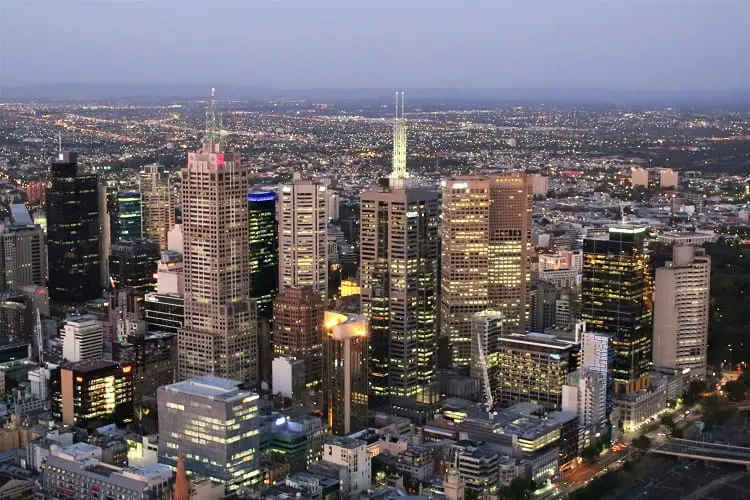
3. Living in Melbourne: Weather & Seasons
The first thing to note is that Melbourne lies very far south on the Australian coastline. Since Australia is in the southern hemisphere, south means cold and north means hot! But it gets a bit more complicated than that.
In fancy terms, Melbourne has a temperate oceanic climate. It has some very hot days in summer but also much colder winters than most of the other Australian capitals.
Melbourne is known for being the city with four seasons in one day, as the weather changes so quickly and dramatically!
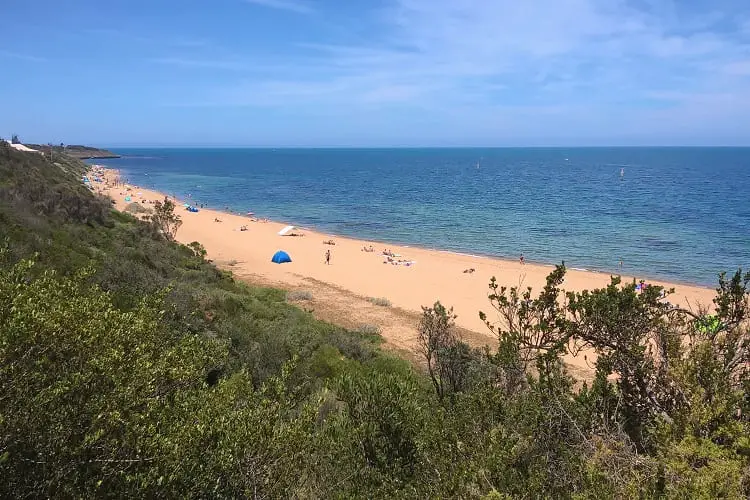
During my two-week summer visit to Melbourne I experienced stifling 40-degree heat that dropped to 15 overnight, a sudden wind so strong that everyone on St Kilda Beach was forced to get up and leave, and a weird dust storm with winds so severe I genuinely thought we were in the midst of a natural disaster!
When I returned in the winter it was 5 degrees in the daytime and mostly rainy. So, in summary, Melbourne weather is variable to say the least!
The average maximum temperature in Melbourne is 26.0 degrees in the hottest month (January) and 13.5 degrees in the coldest month (July).
Overnight, the average minimum temperature in Melbourne is 14.3 degrees in January and 6.0 degrees in July.
Per year, Melbourne has an average of 49 sunny days and 100 rainy days (of at least 1mm). As a comparison, Perth has 139 sunny days per year.
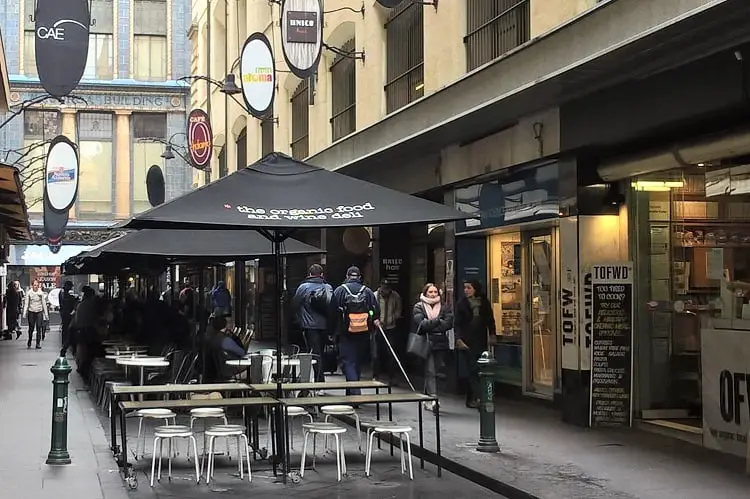
4. Daylight Hours in Melbourne
Unlike Queensland, Western Australia and the Northern Territory, Victoria has daylight saving. This means that you’ll get much lighter summer evenings in Melbourne than in Brisbane, Perth and Darwin.
In the height of summer in Melbourne, the sun goes down around 8:45pm, a good two hours later than in Brisbane and an hour and twenty minutes later than in Perth!
In midwinter the sun sets just after 5pm in Melbourne, which is similar to the other state capitals. Compared to the UK, Australia has more daylight hours during the winter, but less in the summer.
5. Melbourne Beaches
While you’re probably aware of Melbourne’s urban attractions, you might also be wondering if it has any beaches on offer.
While Melbourne can’t compete with Sydney’s 100-plus beaches or the big white Miami-style beaches of Perth, you can still enjoy a good old beach day in Melbourne.
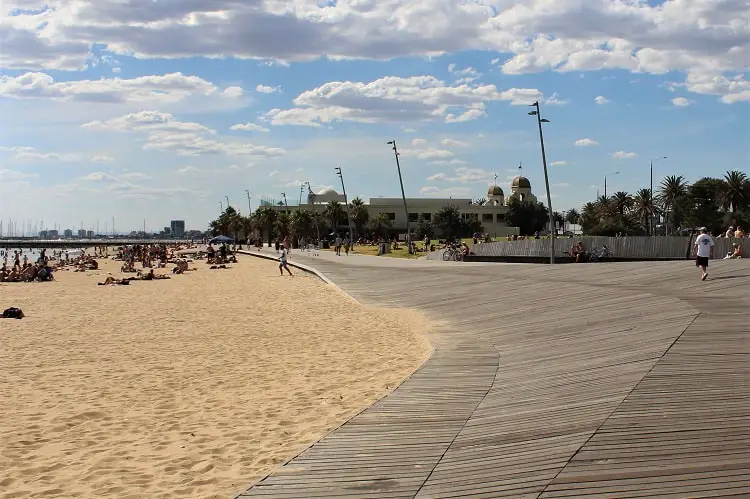
Rather than face out onto the open sea, Melbourne lies on the edges of large Port Phillip Bay. There are a plenty of beaches along here such as St Kilda Beach, Brighton Beach (with its famous, colourful bathing boxes) and Black Rock Beach amongst others.
If you’re willing to drive a bit further out, there’s an array of beaches on the Mornington Peninsula (about an hour from the city) which face both into the bay and out to sea. There are also some great holiday towns to the west, such as Torquay and Anglesea.
6. Living in Melbourne: Things to Do
Being such a large city, there are plenty of things to do in Melbourne. If you’re into food and coffee, you’ll find lots of quirky cafes along Melbourne’s famous laneways and out in the suburbs.
Melbourne is also known for its arty vibe. You can visit a choice of galleries as well as enjoy street art at places like Hosier Lane. There’s also lots of cultural events, festivals and live music.
The city has beautiful botanic gardens as well as markets and interesting historical architecture.
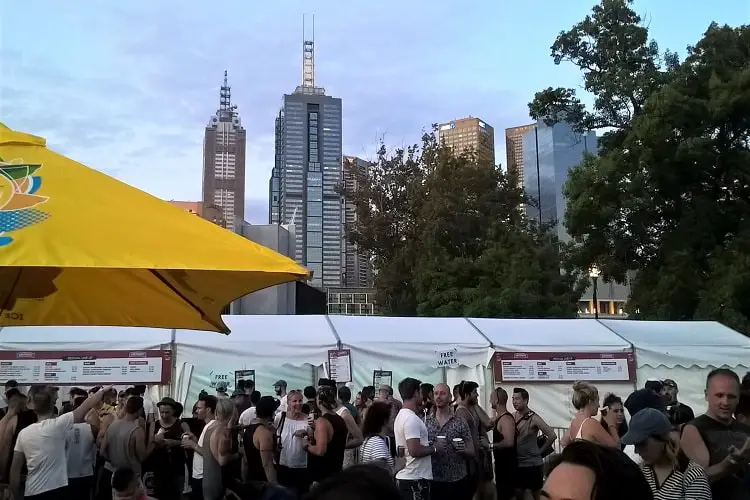
7. Melbourne Property Prices
While Melbourne used to be the second-most expensive city in Australia to buy property in (with Sydney being the priciest), Canberra and Brisbane have now pushed it down to fourth.
According to this monthly property report from Corelogic from September 2024, the median house price in Melbourne during August 2024 was $929,715. The median unit (flat) price in Melbourne was $610,652.
In terms of what kind of properties Melbourne has to offer, there is a huge mix, as you’d expect in such a large city. Along with modern apartments and houses, there’s a wealth of older properties with plenty of character, just like in Sydney.
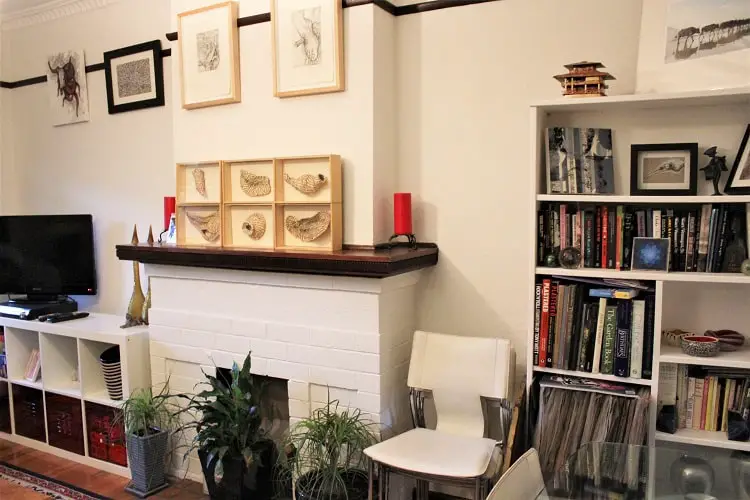
8. Renting in Melbourne
This monthly rental snapshot from rent.com.au states that the median weekly rent in Melbourne in August 2024 was $600 for a house, $560 for a unit/flat and $275 for a room.
Melbourne is now the third-cheapest state capital in Australia to rent property in, with only Hobart and Darwin being cheaper.
9. Trips from Melbourne: Holiday Destinations
Even though Melbourne is a big city, you don’t have to travel far to step into nature. There’s stunning scenery at nearby Wilsons Promontory National Park and the famous penguin parade at Phillip Island.
To the west, there’s plenty of coastal attractions heading towards Adelaide, including rock formations and seaside towns along the well-known Great Ocean Road.
In the winter you can ski at the Snowy Mountains or fly up to Queensland to enjoy some winter sun at places like the Gold Coast or Whitsunday Islands.
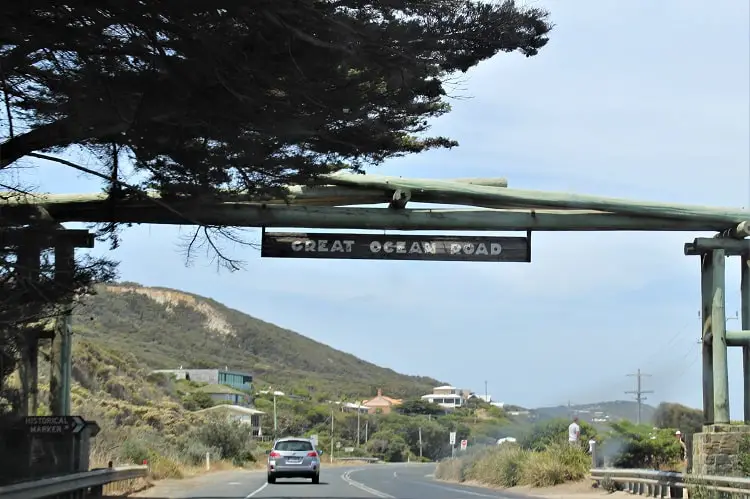
I hope this blog post has given you a better idea of what life in Melbourne could be like!
- To learn about more cities, browse all the articles on my where to live in Australia page.
- If you like the idea of a big city but prefer hotter weather and better beaches, check out my overview of living in Sydney.
- To compare Melbourne with Australia’s most-populated city, read my blog post on Sydney vs Melbourne living.
- If you’d prefer to live in a sunnier city with mouth-watering beaches and more affordable property, make sure you read my review of Melbourne vs Perth lifestyle.
- For a warmer climate and more sunshine than Melbourne, find out how Melbourne compares to Brisbane.
Good luck with your big move!
Pin it for later!
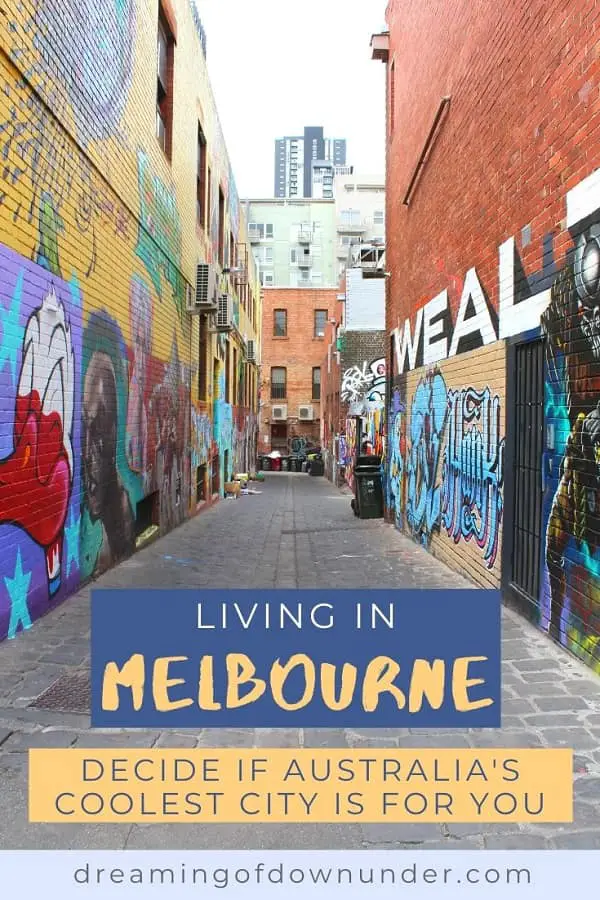
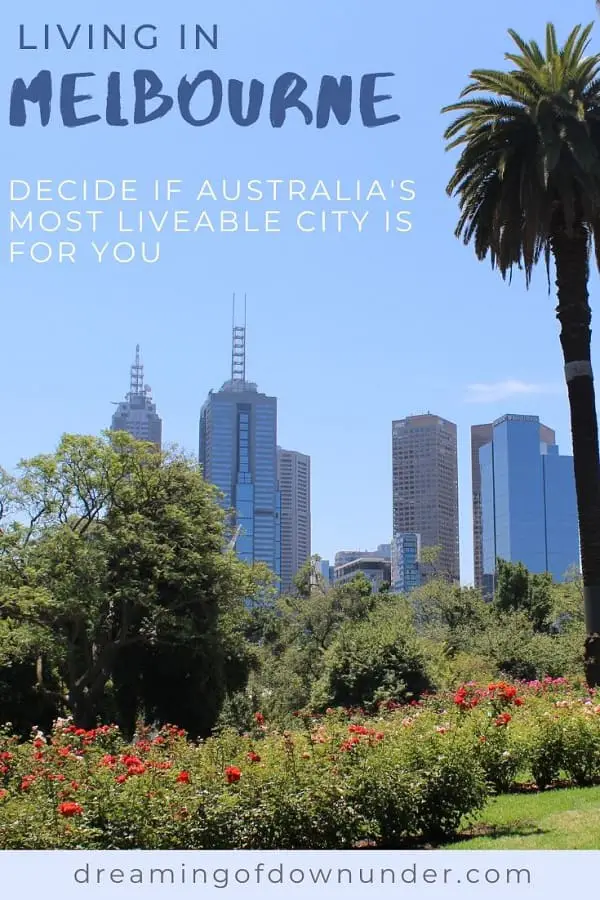
Lisa Bull, founder of Dreaming of Down Under, has been living in Australia as a British expat since 2015. After travelling to every state and territory in Australia and living in Perth, Brisbane and Sydney, Lisa knows from first-hand experience the best destinations to visit in Australia and the best budget travel tips. Her guides on this blog have been read by over 700k readers and helped thousands of people achieve their dream of living in or travelling Australia.
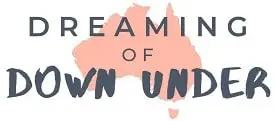

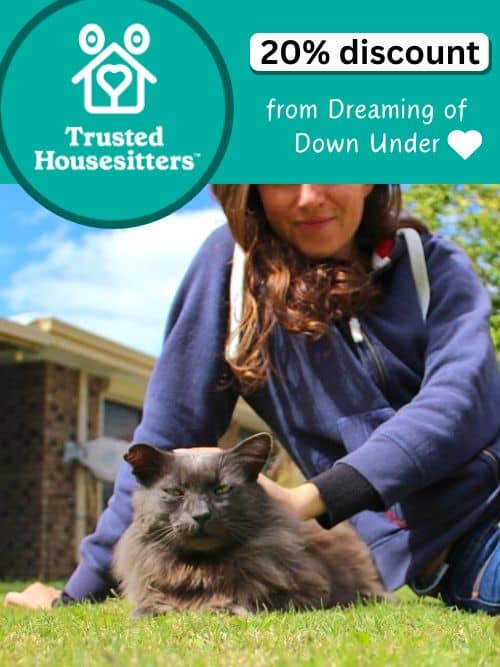
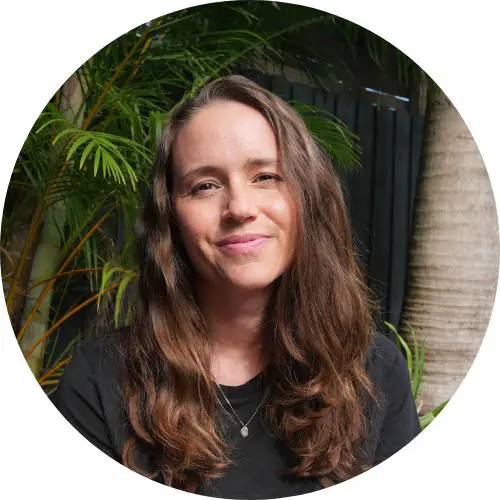
Super helpful- have sent this to my friend who is considering moving over here. A great snapshot of Melbourne living.
Thanks Jo! Glad you found it useful.
Bonzer comment. I was born in Fitzroy when the cable trams ran dowh Gertrude St. The only negative thing is the high humidity in Summer. Willy.
Thanks for your comment! Fitzroy’s a great place.